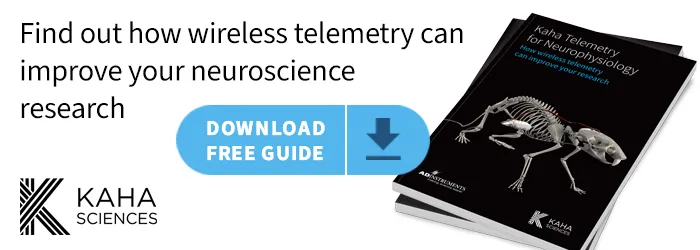In this webinar, Dr. Cameron Metcalf covers the technical requirements and benefits of spontaneous seizure models, addressing the challenges and optimization of 24/7 video-EEG data collection for epilepsy therapy development.
Cameron explores:
- The technical and scientific requirements for models of spontaneous seizures
- The costs and benefits of implementing spontaneous seizure models for therapy development
- The burden of video-EEG data collection, and
- Potential solutions for optimizing studies
In the Anticonvulsant Drug Development (ADD) Program, novel compounds are evaluated using a battery of epilepsy models. While traditional drug screening efforts have centered around single administration in evoked seizure models, there has been an increase in efforts toward more etiologically relevant spontaneous seizure models. These efforts require 24/7 video-EEG systems capable of recording multiple animals simultaneously. Further, as the Contract Site for the Epilepsy Therapy Screening Program of the NINDS, screening studies are performed using established and validated approaches that require larger group sizes to achieve the necessary statistical power.
As such, efforts to screen compounds have required multiple video-EEG recording units using tethered and radio-telemetry systems. The ADD Program has implemented several models with spontaneous seizures and validated these models by screening FDA-approved antiseizure drugs. Novel compounds can then be evaluated and compared to established drugs as part of a preclinical profiling strategy. Studies are completed in a blinded manner, including blinded video-EEG review.
The time-cost of these video reviews is huge, with highly skilled lab staff spending several hours a day combing through video recordings for seizure events. By introducing Kaha telemetry, Cameron and his team were able to use a seizure detection algorithm and reduce the time spent checking video recordings to just 20-minutes a day.
Related: Streamlining seizure detection with Kaha Telemetry
Presenters:

Cameron Metcalf, PhD
Associate Director
ADD Program
University of Utah
Cameron S. Metcalf, PhD is a Research Assistant Professor of Pharmacology & Toxicology and the Associate Director of the Anticonvulsant Drug Development Program at the University of Utah. He has extensive experience in preclinical models of epilepsy and other neurologic conditions.

Katrina Irey, BS
Kaha Sales Specialist
North American Sales
ADInstruments, Inc.
Katrina Irey began working for ADInstruments in 2018 and has truly loved learning about the complexities of all the research projects that her customers have been involved with. It is Katrina's passion to help customers find solutions to their unique research questions and to ensure they are successfully recording high-quality data to support their findings.
